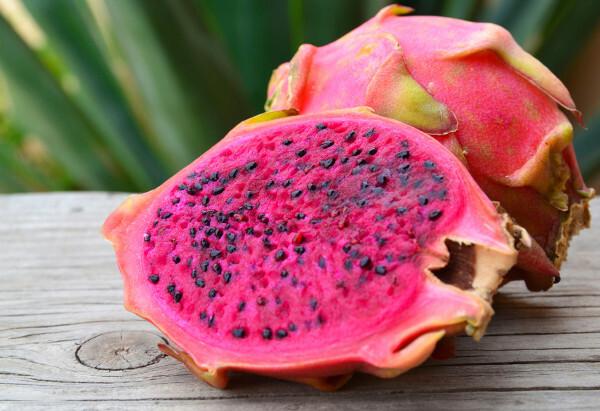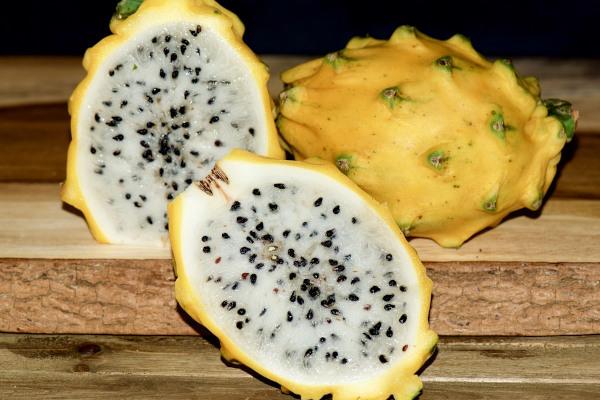Pitaya or Pitaya, also known as "dragon fruit" or "dragon fruit", is a fruit that has been gaining increasing space in the Brazilian market. The word pitaya comes from the Taíno language and means flaky fruit. The name pitaya is given to different species, which differ mainly by the color of the rind and pulp of the fruit.
The fruits have a sweet taste and beneficial properties for human health. THE exotic look of the fruit, as well as its mild flavor and nutritional characteristics are some of the factors that made the consumption of the fruit increase in recent years, although it is still considered a growth shy.
Read too: Lychee — fruit originating in China that has several nutritional benefits
Botanical characterization of pitaya
The pitaya is a plant belonging to the Cactaceae family. The species belonging to this family possibly originated in North, Central and South America. Several species receive the popular name of pitaya, which differ, for example, by the color of the rind and pulp of its fruit. Some of the most cultivated species of pitaya are:
Selenicereus undatus, Selenicereus costaricensiss, Selenicereus setaceums and Selenicereus megalanthus.
The S specieselenicereus undatus it stands out for having a red skin and a white pulp. THE Selenicereus costaricensiss, in turn, it presents both the rind of the fruit and the pulp in red color. already the species Selenicereus setaceums has fruits with red skin and thorns, and the pulp is white. Finally, the species Selenicereus megalanthus it has a yellow bark with thorns and a white pulp. Among the species mentioned, the selenicereus undatus, which is the most cultivated in Brazil and around the world.
The pitayas can be described as perennial plants and those that have the habit of liana (vine). They can grow on treetops, walls and even rocks. The stem is morphologically classified as cladode. The flowers are large, white and aromatic. Fruits are globose to subglobose and, as seen above, may have different colorations, with yellow or red fruits being observed, which may be covered by bracts or thorns. The fruit, which is from the berry type, it has a sweet taste and a series of compounds that are beneficial to health.
See also: Kiwi fruit - fruit that also has important nutritional properties
Use of the pitia

The fruits of the pitaya are the most consumed part of the plant, although other parts are also appreciated, such as cladodes and flowers. Fruits can be eaten in nature or be used in the manufacture of other products, such as ice cream, jellies, beverages and sweets.
Due to the high content of pigments, pitaya fruits can be considered a alternative to the use of artificial colors. In addition, it can also be used in animal feed, as forage.
We can't also forget to mention that pitaya has great importance as ornamental plant, due, among other factors, to the beauty of its flowers. Because it has thorns, it is also used as a hedge. Due to the presence of important compounds, pitaya has also generated interest in the pharmaceutical and cosmetics industry.
Benefits of consuming pitia

The fruit intake of pitaya is beneficial to our health, since they have a number of important compounds. Studies have linked fruit consumption with the prevention of various health problems, such as some types of cancer,diabetes, stomach problems, cardiovascular complications and respiratory problems. These properties are mainly related to the presence of antioxidant substances.
In addition, the pitaya is rich in phosphor, calcium andfibers.Adequate fiber intake reduces the risk of developing high blood pressure, diabetes mellitus, stroke, gastrointestinal disorders, etc. It is also worth noting that pitaya seeds have an oil that works as laxative and which is related to the decrease in total cholesterol levels and LDL.
By Vanessa Sardinha dos Santos
Biology teacher
